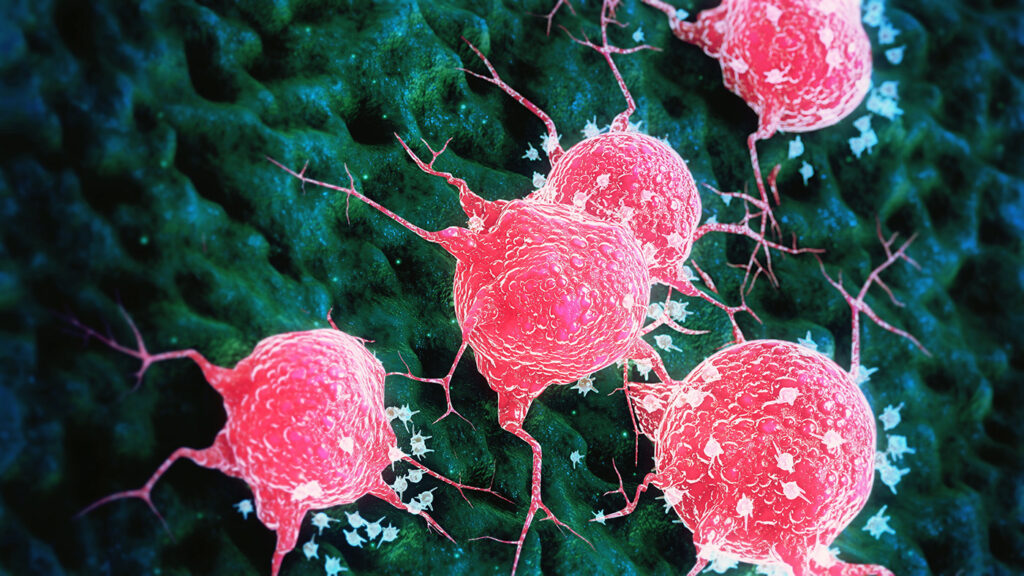Identifying the mechanisms of action driving a drug’s anti-cancer efficacy is critical for identifying optimal biomarkers, indications, and combinations for clinical success. Yet, systematically identifying these mechanisms remains challenging, as drugs often engage in multiple targets with varying affinities across different cellular contexts.
In a new study published in npj Precision Oncology titled, “DeepTarget predicts anti-cancer mechanisms of action of small molecules by integrating drug and genetic screens,” researchers from Sanford Burnham Prebys Medical Discovery Institute and the National Institutes of Health (NIH) have developed DeepTarget, a computational tool that integrates large-scale drug and genetic knockdown viability screens with omics data to predict drug mechanisms that drive cancer cell killing.
Sanju Sinha, PhD, assistant professor in the Cancer Metabolism and Microenvironment Program at Sanford Burnham Prebys Medical Discovery Institute and first author of the study, emphasizes the many small molecules representing today’s medicines are rarely found in nature and have not evolved to carry out specific tasks.
“Sometimes the field looks at these drugs with tunnel vision in terms of them having a single target along with some side effects labeled as ‘off-target effects.’” said Sinha. “Taking a more holistic view reveals that small molecules can have different targets and effects depending on the disease and cell type, and we can use this knowledge to repurpose more drugs to treat more patients.”
DeepTarget’s dataset included comprehensive data for 1450 drugs across 371 cancer cell lines from the Dependency Map (DepMap) Consortium’s efforts to create an atlas of cancer vulnerabilities.
In seven out of eight tests comparing computational predictions of primary cancer drug targets to existing data on drug-target pairs, DeepTarget performed better than current state-of-the-art tools including RoseTTAFold All-Atom and Chai-1.
The research team also demonstrated that DeepTarget can predict if drugs have preferential effects on typical, non-mutated target proteins or their mutant forms, as well as determine drug secondary targets. To benchmark DeepTarget’s capability to predict secondary targets, performance was compared to existing data on 64 cancer drugs known to have more than one target.
“Being able to predict these secondary targets is important because many FDA-approved drugs and new drugs in clinical development have them,” said Sinha. “If we can see them more as features rather than bugs, we can take advantage of these targets to improve drug repurposing.”
To validate their findings, the research team conducted two experimental case studies, including one on Ibrutinib, an FDA-approved drug for blood cancer. Prior clinical research showed that Ibrutinib could treat lung cancer even though the drug’s primary target—a protein called Bruton’s tyrosine kinase (BTK)—is not present in lung tumors.
In collaboration with the lab of co-corresponding author Ani Deshpande, PhD, professor in the Cancer Genome and Epigenetics Program at Sanford Burnham Prebys, the authors tested DeepTarget’s prediction that Ibrutinib was killing lung cancer cells by acting on a secondary target protein called epidermal growth factor receptor (EGFR). When comparing the effects of Ibrutinib on cancer cells with and without the cancerous mutant EGFR, cells harboring the mutant form were more sensitive to the drug, validating EGFR as a target of Ibrutinib.
Looking ahead, Sinha seeks to use the pipeline to create new small molecule candidate drugs.
“The potential pool of chemicals is much larger than what we are able to screen for even with modern, high-throughput drug screening methods,” said Sinha. “Improving treatment options for cancer and for related and even more complex conditions like aging will depend on us improving both our ways to understand the biology, as well as ways to modulate it with therapies.”

